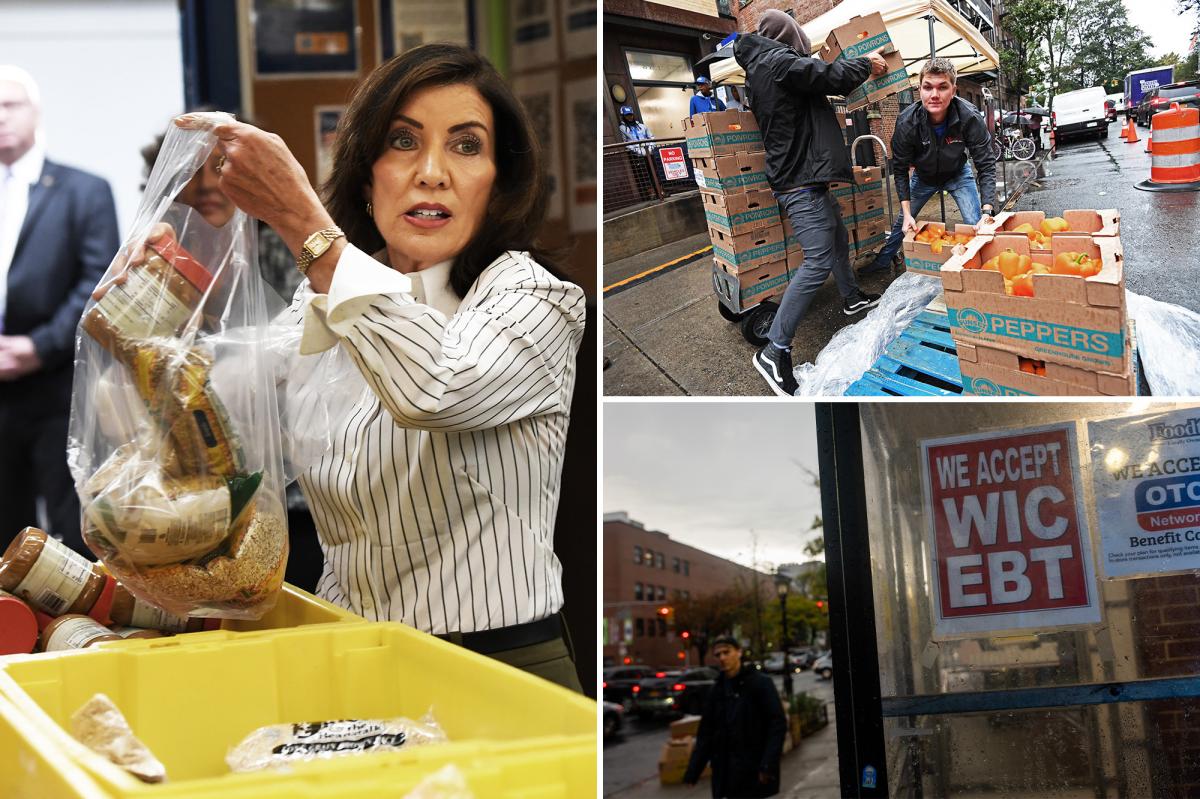New York Gov. Kathy Hochul ordered agencies to start paying SNAP benefits to New Yorkers using state funds — after the longest-ever federal government shutdown cut off food stamp payments for the first time.
The first payments could come Sunday — nine days after the food payments were stopped.
Roughly 2.9 million New Yorkers rely on SNAP, and Hochul defended the move as necessary due to “chaos and confusion” over the federal shutdown.
“Let me be clear, President Trump is hellbent on preventing millions of Americans from putting food on the table,” Hochul said on Friday.
Hochul directed New York agencies to ensure the Supplemental Nutrition Assistance Program (SNAP) is fully funded through November. Matthew McDermott
“He’s made decision after decision to withhold funding that feeds families, seniors and children — and continues doubling down on this cruelty by challenging the courts’ clear orders.”
Hochul’s announcement Friday came after Rep. Elise Stefanik (R-NY) announced she would run against Hochul in the 2026 election, with some polls suggesting the race could be neck-and-neck.
Start your day with all you need to know
Morning Report delivers the latest news, videos, photos and more.
Thanks for signing up!
The Department of Agriculture, which runs SNAP, has informed states last week that it is seeking to fully pay out SNAP benefits during November despite a funding lapse caused by the government shutdown.
But last week, the Trump administration appealed a court order requiring it to fully fund SNAP by Friday of last week, as the move would’ve forced the Department of Agriculture to dip into other programs besides the contingency fund.
Roughly 2.9 million New Yorkers who rely on SNAP should expect their benefits despite “chaos” triggered by the government shutdown. Matthew McDermott
On Friday, the Supreme Court temporarily paused that lower court order.
The average household on SNAP gets $332 per month, and the average household with children gets about $575.
While the Trump administration scrambles to find a makeshift avenue to fund SNAP, Republicans argue that fully restoring payments is simple: Democrats just have to vote for the government funding bill to reopen the government.
So far, Dems are rejecting a clean stopgap to reopen the government — demanding that Republicans add more funding for healthcare and Medicaid subsidies.
SNAP funding lapsed on Nov. 1 due to the government shutdown. Last week, the Trump administration agreed to tap into about $4.65 billion in its contingency fund to fund about half the program for November.
The administration previously said in a September memo that it lacked the authority to use the contingency fund, which is used for natural disasters and other emergencies, to keep SNAP afloat.
Trump administration appealed a court order requiring it to fully fund SNAP by Friday of last week. Getty Images
The administration also ruled out the use of Child Nutrition Program funds to finance SNAP during the lapse due to uncertainty over whether Congress would replenish that money. CNP and the contingency fund have roughly enough money to keep SNAP afloat for all of November
SNAP, which helps feed some 42 million Americans, costs $8.5 to $9 billion each month.
Various states, including Massachusetts and Connecticut, have announced plans to fully fund the critical food program, while other states such as Illinois, Kentucky, Louisiana and North Dakota, have rolled out partial benefits.
The government has been shut down since Oct. 1 due to a stalemate over how to fund the government.
